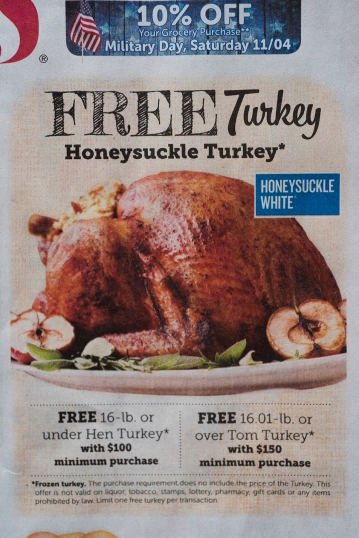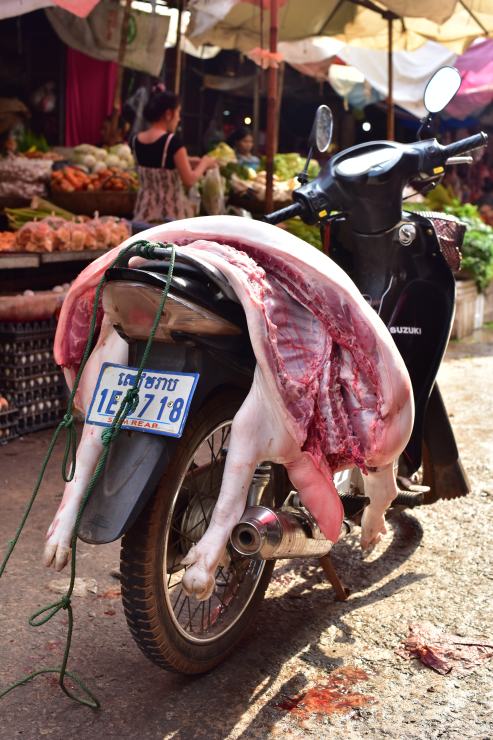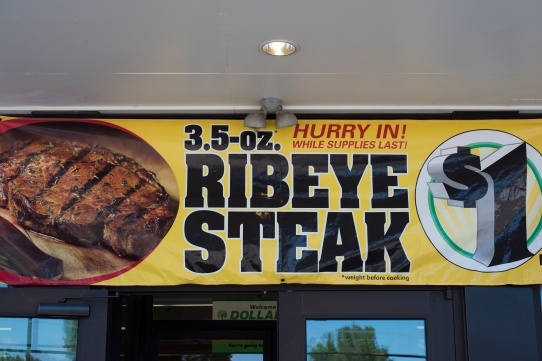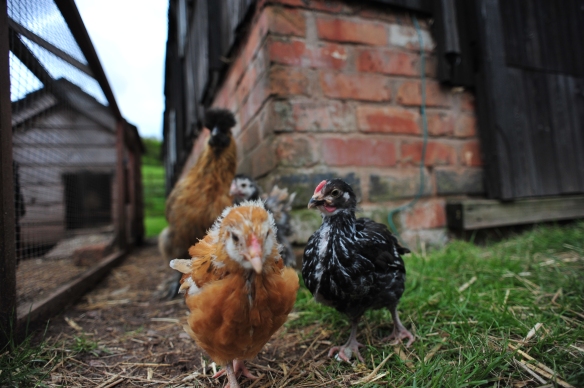The past two months have exposed a great number of frailties in systems we’ve long taken for granted. From child care to health care, we’ve learned firsthand that most – if not all – of our societal structures are built on debt-ridden quicksand. Nowhere has this fragility been more apparent than in our food supply, long the envy of less-developed nations.

Mmmm…meat in tubes. Delicious.
If you’ve ever traveled in the Caribbean or Africa or Asia – really, anywhere outside of the U.S. and Europe – you know that a standard Western grocery store is a thing of miracles. The glossy, perfect produce, appealingly stacked in lush displays. With artificial thunderstorms! Acres of cold-storage, displaying hygienically shrink-wrapped packages of beef, pork, chicken and fish, none of which resemble the animal they once were. The deli abounds with cheeses and olives and overflowing dishes of prepared foods, enticingly displayed on beds of ornamental kale. Aisle upon aisle of boxed mixes and snack foods and sodas and candy and cookies and chips, plus thousands of cleaning products and toiletries and other various and sundry items, all brightly-colored and stocked in abundance. A standard Western grocery store never has bare shelves, because that violates its very reason for existing – that we have so much, we can replenish each item before it’s even made its way to the check-out.

There is nothing free about this turkey.
For the first time in most of our lives, we’re seeing these shelves bare. Staples like beans and flour and rice and yeast and pasta and toilet paper are either missing from stores entirely, or their purchases are carefully controlled. Many stores are limiting meat purchases, too, thanks to the impact of Covid-19 on meatpacking plants. Rationing is not something that Americans have much experience with, and this is made even more heartbreaking – and perplexing – when we see millions of pounds of food destroyed and mile-long lines at food banks.

I’d far rather eat meat from an open-air market in southeast Asia than an American factory farm.
As Michael Pollan explains in his recent article for The New York Review of Books, America’s food system is cleanly divided into two segments: one for retail grocery stores and at-home consumption, and the other for large-scale commercial food production, such as restaurants, hotels, schools, hospitals, prisons and so on. These two chains run parallel but they almost never intersect, and this division is why farmers have plowed under thousands of pounds of onions and dumped millions of gallons of milk. These sectors can’t easily move food across the gulf that separates them; our food web is so tightly strung that it cannot make any accommodation for a disruption on the scale we’re currently facing. We have plenty of food, but we can’t get it to where it’s needed.

Millions of chickens. Endless torture.
And that brings us to the American meatpacking industry: never before in human history has there been a system so efficient, so profitable and so deadly. On a relative basis we pay less for meat than anyone else in the world, and that’s because we’ve gotten so good at raising and slaughtering animals at staggeringly quick rates. Those cheap prices are superficial, however, because we pay in other ways: primarily in health care costs and environmental destruction.
The consolidation of meatpacking into just a few plants across the country seemed like a great idea right up until coronavirus arrived, and now it’s exposing all the inherent weaknesses of a concentrated industry with no built-in resilience or maneuverability. Meat plant workers – typically recently-arrived immigrants – work shoulder-to-shoulder in a loud, dangerous environment where “social distancing” is laughably impossible. They process animals repetitively, for hours on end, for low pay. The job is treacherous and deeply demoralizing – but the political influence of the meatpacking industry means these workers have now been classified as “essential,” and the plants themselves have been absolved of any responsibility for sickness or death. Just so we can eat more cheap meat.

Does buying a “ribeye steak” at a dollar store seem like a good idea to anyone?
To make matters worse, over the next few weeks hundreds of thousands of animals – primarily piglets and laying hens – will be destroyed and not turned into food. The shutdown of the meat plants created a bottleneck that can only be unjammed by removing the next few generations of animals coming down the line. Chickens can’t be sent to closed plants, so there is no point in hatching additional eggs. Once pigs reach a certain weight they can’t be processed, because the line is built for identical animals at a precisely-defined size. This industry is so carefully structured down to the ounce and minute that the shutdowns we’ve experienced have brought it to its knees, and as a result farmers are slaughtering their own animals and then attempting to deal with the massive quantity of unforeseen carcasses. At least thirty meat plant workers and four USDA inspectors have died from the virus as of this writing, and considering that more than 10,000 in the industry are infected, those numbers are likely to rise. But since they’re now essential, most will continue to go to work. The center cannot hold.

What’s the solution? It’s simple: if you live in the U.S., don’t buy commodity meat. This means anything sold at a standard grocery store, warehouse club store and the vast majority of restaurants, including fast-food, fast-casual and mid-price chains. Don’t be swayed by labels like “organic” or “natural” or “grass-fed” – they’re meaningless and unregulated and designed to trick you into thinking that you’re somehow buying a happy animal respectfully processed by happy people. You’re not. You’re buying an animal who lived and died in horrific conditions and is then processed by humans working in horrific conditions.
If you choose to eat meat, understand that it costs quite a lot more than 99 cents a pound to raise and butcher healthy animals, and pay accordingly. Buy your meat from a small butcher or someone who raises animals, ask where it comes from and know how that animal was raised – and how that animal died. Learn how to cook the “lesser cuts” (low and slow!) and use meat as seasoning rather than the center of the plate so your dollar stretches further. Eat less meat, but spend more on it. Vote with your wallet, because it’s the only vote that counts.

Everyone is looking desperately for silver linings in the face of the gravest crisis the world has ever seen. It’s becoming more and more clear that our Western diet and its resulting lifestyle diseases, such as diabetes, heart disease, high blood pressure and obesity, substantially increase the mortality risk associated with Covid-19; eating less (or no!) meat is an easy step towards a healthier life. The total restructuring of the American industrialized food system – or even a tiny shift in purchasing decisions! – would be the best silver lining we could wish for.
I have never been more thankful that we had purchased a half of a cow and a pig from a farm in December prior to this situation. The break down of the system makes me so sad as you stated, so much food need and waste at the same time. I do hope through this that people are willing to pay more for good quality meat but then understand many people will now not have the means to do so. So I then hope, they will eat less meat and we can work on improving all of our food supply system.
LikeLike
Hi Sara, thanks for reading. Buying whole (or half) animals is definitely the best way to eat good meat, and it teaches you how to cook unusual cuts, too! I hope that with tightened budgets people will spend more money on quality legumes, grains and vegetables rather than cheap meat, but I’m not holding my breath.
LikeLike
AMEN Sister!
Well stated and I remember you chatting about this well before COVID. Thank you for your insight…. always enjoy reading your material. Karen
LikeLike
Thank you, Karen! Wishing you and yours all the best.
LikeLike
Thank you, Elizabeth, for providing more info & reasons not to purchase grocery store meat & poultry! So glad I found ways to do without it so I don’t have that problem to resolve along with all of the other lifestyle changes. There are many upsides to this pandemic~stopping some things, slowing down some things, especially, exposing some things.
During Covid home schooling, daughter & grandkids built a chicken coop and now have 6 half grown chicks. They adore the chicks so much that when they went to the ocean last weekend they took the chicks with them.
Love your newsletters! Thank you for all of the hard work you’re doing!
Karen Nelson
>
LikeLike
Thanks for your kind words, Karen, and we wish you and yours all the best.
LikeLike